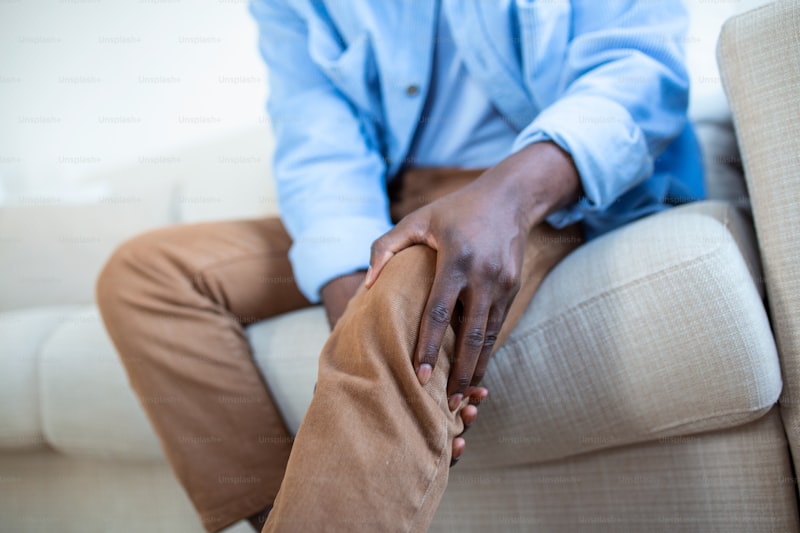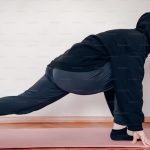I love knees – they are simple, honest joints that work hard for us and tell us when they are not happy. Very few people get through life without ever having sore knees and many unfortunate folks suffer painful knees on a daily basis.
And knee pain is horrible. It is often enough for people to stop doing things that they love – running, hill walking, dancing, even yoga – but this does not have to be the case. Most sore knees will feel better if they are used and kept strong and mobile. In fact, as a physiotherapist, I regularly see patients that can get back to being pain-free after a period of rehabilitation based on stretching and strengthening. The secret is that knees love to be used and love to be worked – rest and avoiding things SO is not the answer. And the really good news? Yoga IS the answer.
Yoga offers a wonderful way to build strength and improve flexibility in a comfortable and controlled way. It allows folk to start gently and work harder as they build strength, range of movement and balance. It is suitable for everyone – from teenagers with ‘growing pains’ to silver surfers. All genders, shapes, sizes and fitness levels can do yoga and their knees will thank them for it. And yoga is not just the cure but it is the prevention too. Not getting knee pain? Great – yoga can help keep it that way. Result!
Anatomy
Our knees are a hinge joint that mainly bends (flexes) and straightens (extends). There is a little bit of rotation too as the knee moves through the last few
degrees of extension. While it only has one name, the knee is actually made up of 3 joints
- Tibiofemoral joint – This is the main hinge joint between the thigh bone (femur) and shin bone (tibia). In this joint, there are two cushions of cartilage called menisci that act as shock absorbers and help to guide the movement in the joint.
- Patellofemoral joint – This is the joint between the knee cap (patella) and the front of the femur. The patella sits in the tendon of the quads muscles and slides in a groove on the femur as the knee bends and straightens.
- Superior tibiofibular joint – This is a little joint on the outside of the upper leg between the two bones of the lower leg.
The joints are held together by a range of ligaments that provide stability to the joint and it is all worked by two big muscle groups called the quadriceps (front of thigh) and hamstrings (back of thigh).
What can go wrong?
Sometimes a specific part of a knee can be injured by something like a slip or fall. These injuries are also common in sports. Menisci can get torn and ligaments can be sprained or ruptured this way.
Joint surfaces can show signs of damage and this has long been blamed on ‘wear and tear’. The thinking was that the more you used a joint, the more likely it was to wear out and cause pain. But research is showing us that this is not really the case. People who are not very active are just as likely to have ‘wear and tear’ changes as people who have worked their knees really hard all their life. These changes may show on a scan or X-Ray but do not relate to pain – someone can have loads of changes on an image but their knees feel fine (and vice versa).
No matter what the exact problem is, it is tempting to rest injured or painful knees thinking that doing less will make them better. This works in the short term but ultimately causes muscle weakness and stiffer joints which are then more painful. The bottom line is that weak and stiff joints are painful ones but mobile, strong joints are resilient, robust and comfortable.
So, where does that leave us? Well, it really makes things simple. It reassures us that it is safe to exercise injured and sore knees. In fact it is GOOD to exercise injured, sore and painful knees – they will thank you for it! They will literally go from strength to strength.
Yoga for Sore Knees
So, where can you start? My advice is to start with things that don’t hurt – practice ahimsa (non-violence) on your mat. If something hurts – don’t do it! Modify to make it more comfortable or do something else that doesn’t hurt. Don’t forget that not every yoga pose suits every yogi.
Here are a few of my favourite modifications and poses for sore knees.
- Start in sitting – Dandāsana (staff pose) is a great place to work the quads muscles and start to strengthen them up to prepare for more challenging standing poses. Focus on drawing the toes towards the knees (dorsi flexion at the ankle) and aiming to pull the knee cap up the front of the leg using your thigh muscles. At he same time, work the back of the legs to stop the heels lifting from the floor.
- Step short – When moving on to standing poses, use a shorter, wider stride. This works particularly well in virabhadrāsana 1 & 2 (warrior 1 & 2) by reducing the amount of bend in the front knee until it is painfree. As you get stronger, take a longer stride to deepen the bend in the knee if it becomes painfree.
- Be balanced – single leg balances are a lovely way to work the whole leg without much knee bend. Working to ‘screw’ the standing leg up into the hip will encourage the hamstrings and quads to work even though the knee is not moving.
- Supported forward folds – Tight hamstrings are often a cause of knee pain and they need lengthening to get comfortable knees. Forward folds are the way forwards here but they can be so challenging to the hamstrung yogi! Try keeping a bend in the knees to keep the fold comfortable. Also supporting the hands on a chair or blocks instead of trying to touch the floor makes these poses more accessible. Remember that stretches should only be mildly uncomfortable – if they are painful they are not doing you any good. Ease off and notice how much more effective stretching can be.
- Cheeky childs pose – Balasana (childs pose) is a double edged sword – is a great way to increase knee bend BUT can be really painful if pushed to hard.
Try placing a block or pillow between you buttocks and heels to support you at point where it is comfortable. Reduce the padding over time as the knees increase their mobility and the pose becomes more comfortable.
And the bottom line is – don’t do anything that hurts. But remember that it may not always hurt – as your knees get stronger and more mobile you are likely to be able to do things that you wouldn’t dream of trying now. It will be a journey of baby steps – I don’t know how comfortable your knees will get but every pace forwards is worth it.
Yoga is such a simple and effective way to manage and prevent knee pain. It may allow you to return to other activities that you love. Or you may decide, like me, that yoga is enough. My yoga keeps me painfree and I love it so much that I never bothered to get back to running. Wouldn’t you love to have that choice?












